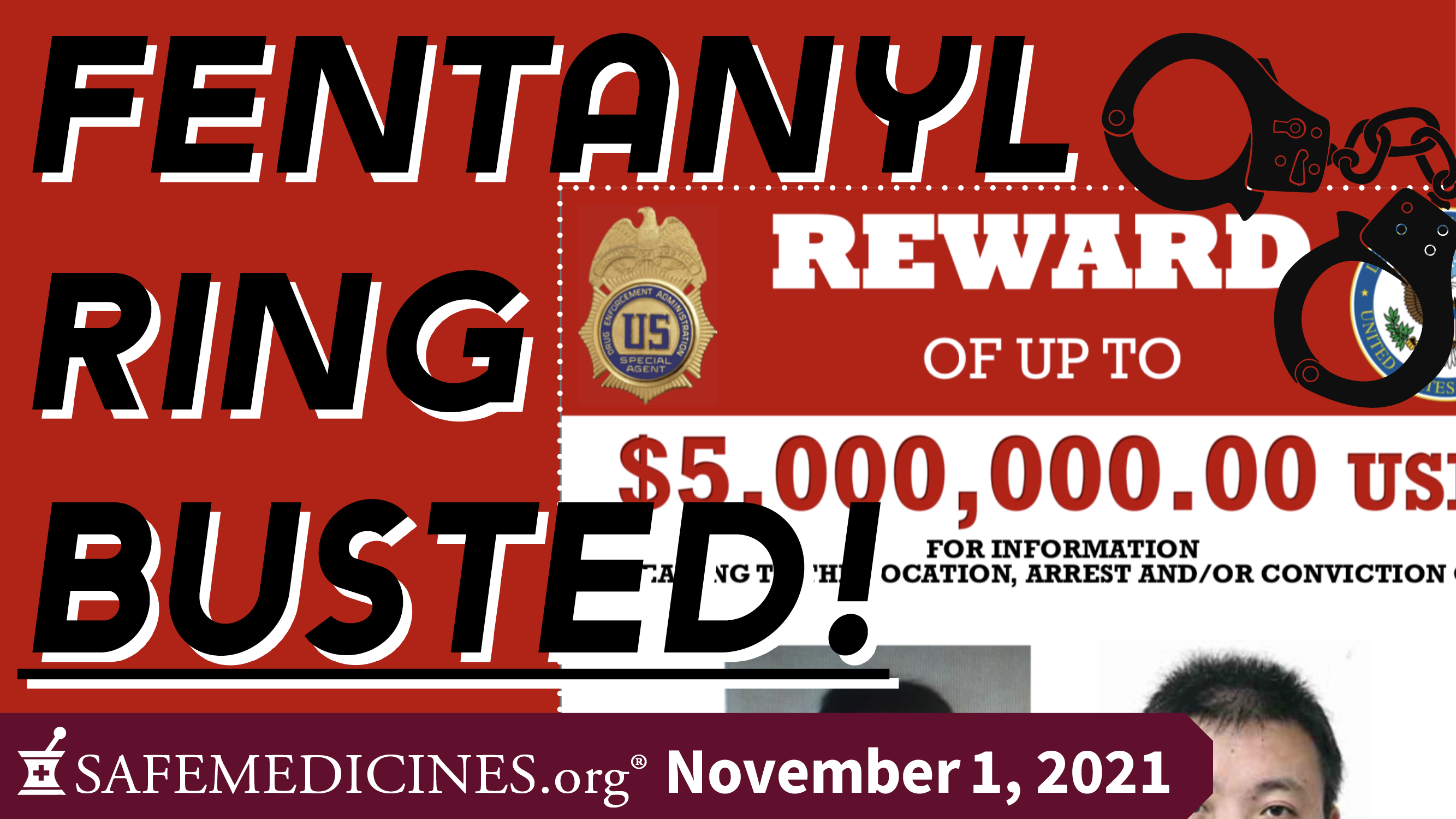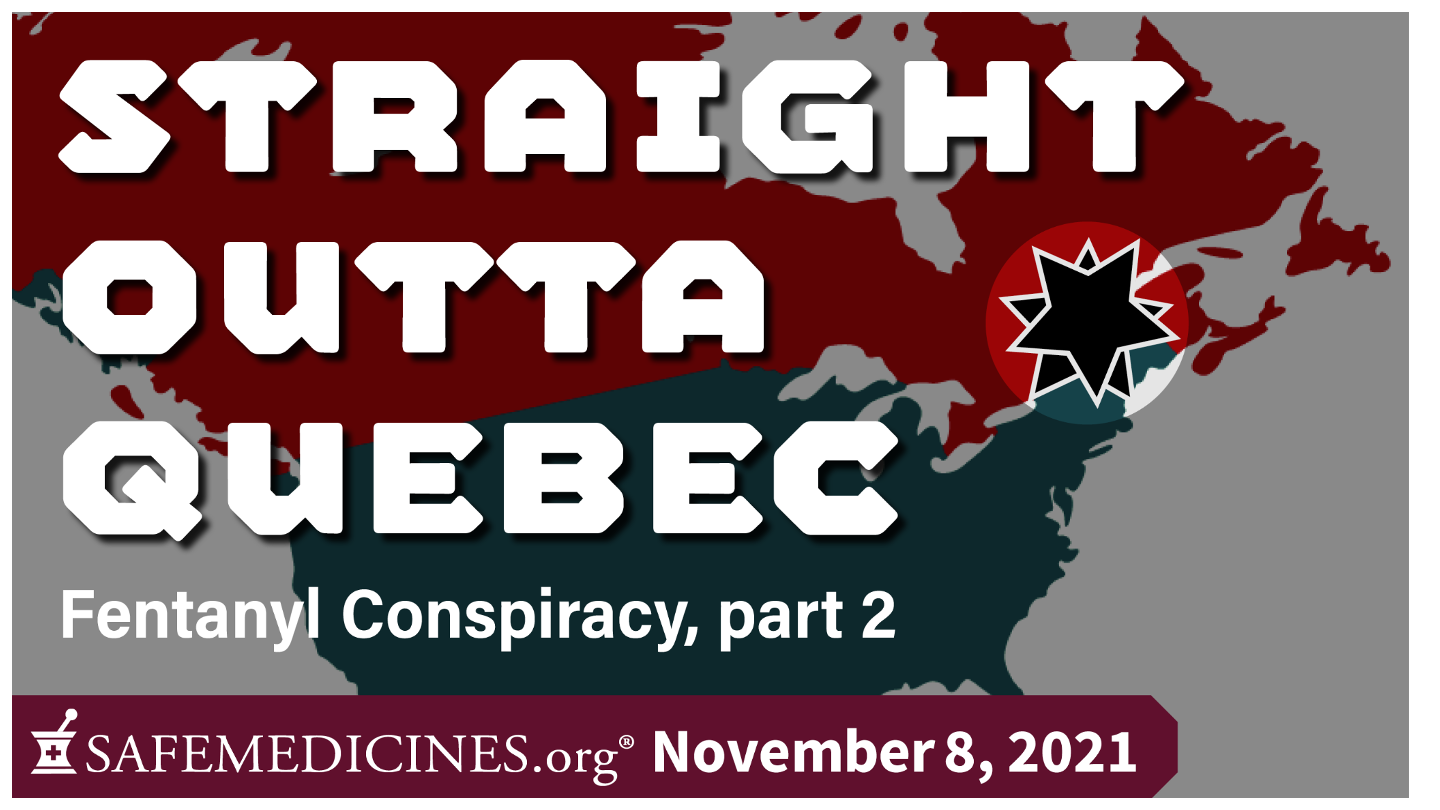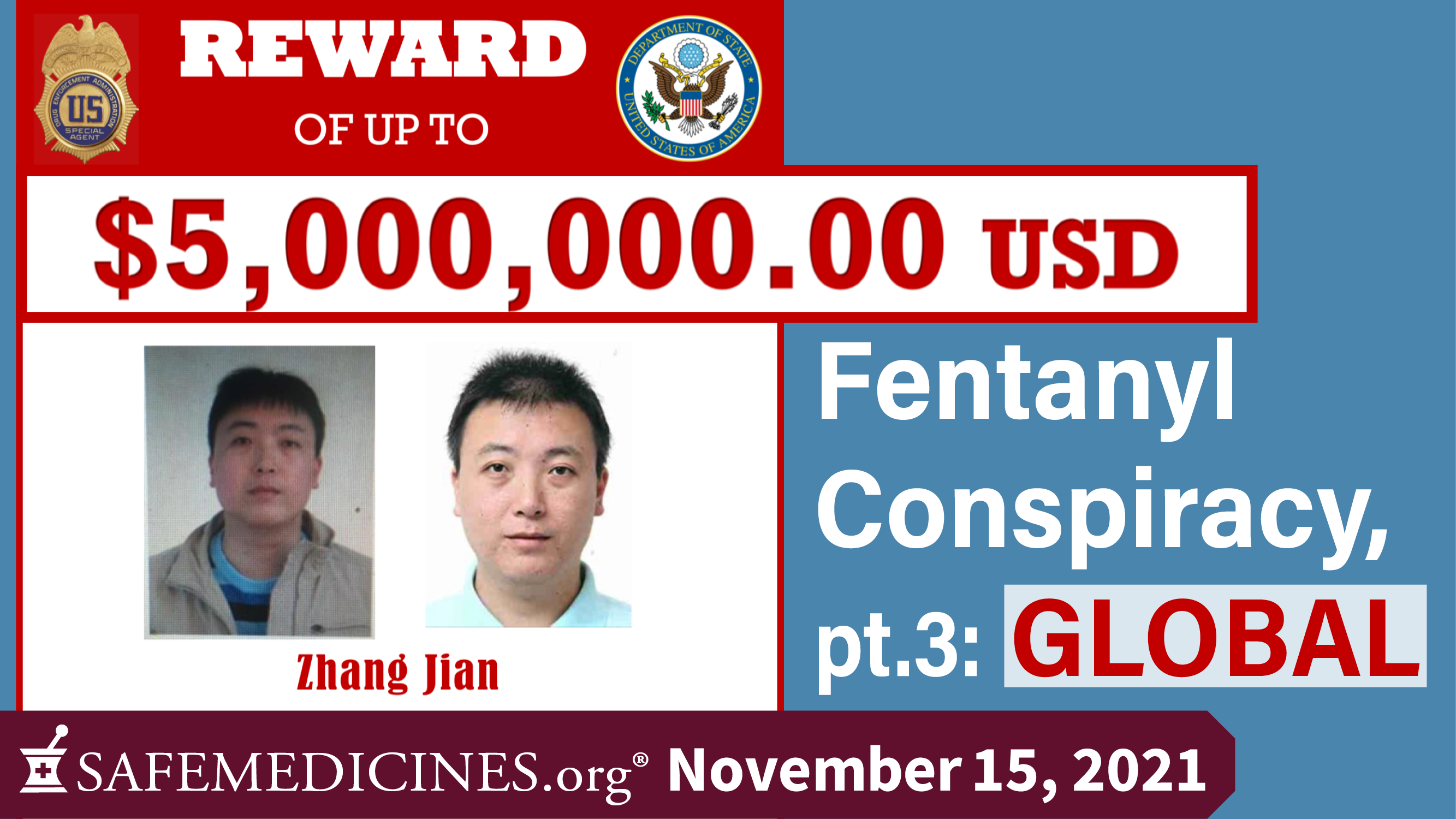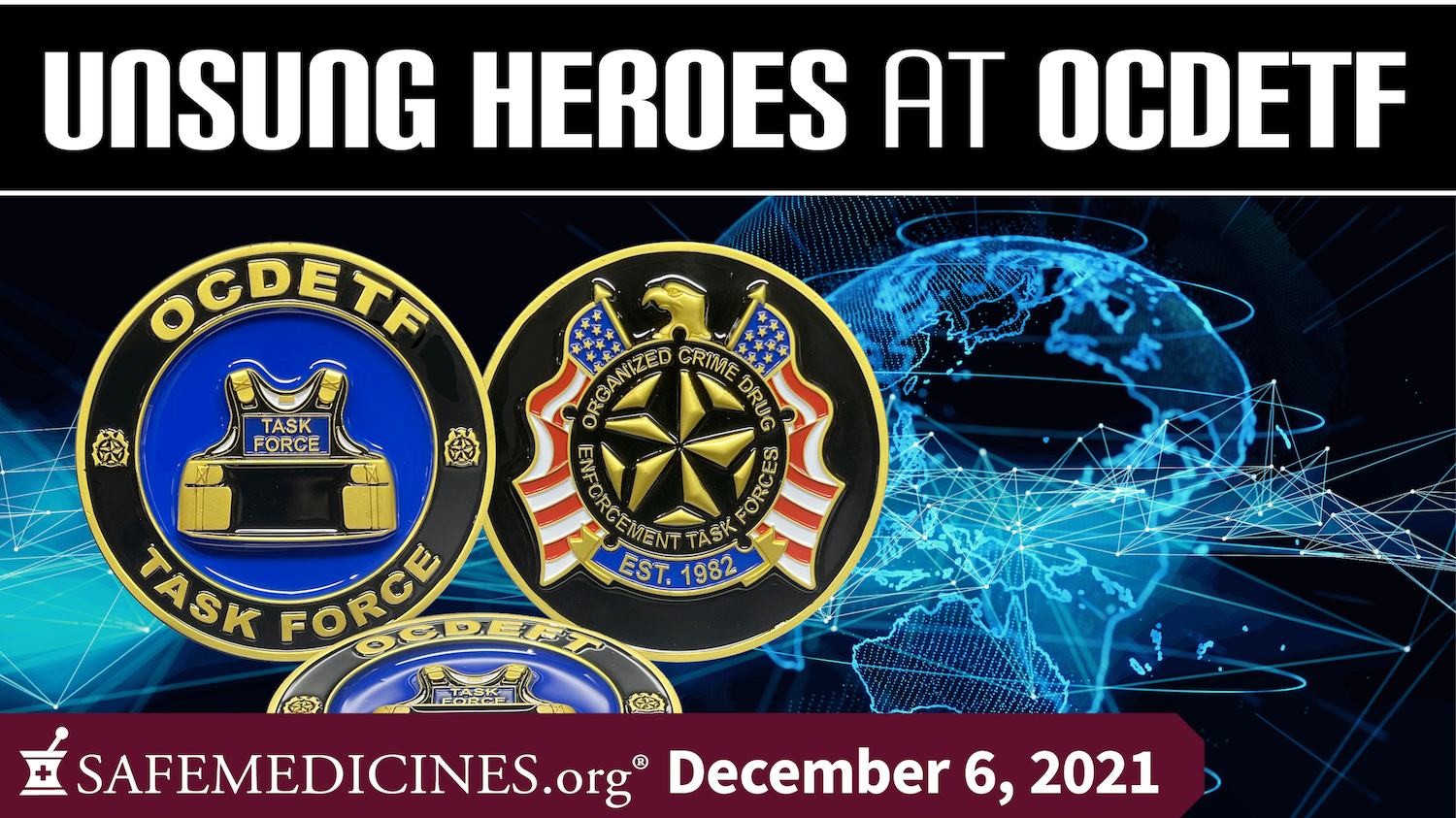Operation Denial: OCDETF shuts down a 32-person, three-country fentanyl trafficking conspiracy
Operation Denial is an Organized Crime and Drug Enforcement Task Force (OCDETF) investigation into an international fentanyl trafficking conspiracy that spanned Canada, China and the U.S. The investigation has been ongoing since the death of a teenager in Grand Forks, North Dakota in January 2015.
Click the thumbnails below to watch and read transcripts with links to the sources we reference.
Thanks to the agencies that contributed to this investigation:
Grand Forks Narcotics Task Force
Grand Forks Police Department
Homeland Security Investigations
Internal Revenue Service Criminal Investigation
North Dakota Bureau of Criminal Investigation
Oregon State Police, Grand Forks Police Department
Organized Crime Drug Enforcement Task Forces
Portland Oregon Police Bureau – Drugs and Vice Division
Portland HIDTA Interdiction Task Force
U.S. Customs and Border Protection
U.S. Drug Enforcement Administration
U.S. Treasury Department's Office of Foreign Assets Control
U.S. Justice Department’s Office of International Affairs
U.S. Postal Inspection Service
Ministry of Public Security of China
Royal Canadian Mounted Police
Video 1: Fentanyl Ring Busted
Transcript
How did a teenager dying in North Dakota bring down a fentanyl conspiracy ring that spanned three nations and two continents?
Bailey Henke’s death from fentanyl poisoning on January 3, 2015 kicked off a long and complicated investigation that led to 32 individuals indicted in China, Canada, and the U.S.
People in Oregon, North Dakota, New Jersey and North Carolina were either poisoned or killed by this ring, and the ring also included activity in California, South Carolina, Ohio, Colorado, Maryland, Rhode Island and elsewhere.
This conspiracy starts in China, where an enterprising criminal started selling fentanyl powder and pills. He’s not yet in custody and has a five million dollar bounty on his head.
The next step was Canada, where two men who were inmates at a prison in Quebec, were charged with running the operation from their jail cells.
These Canadians were having such an impact in the U.S. that two different agencies, DEA and Homeland Security, discovered that they had opened separate, parallel investigations. The agencies merged them and got double the manpower.
The next level down were individuals in eight states who used both street sales and the dark web to sell the deadly products.
The tragic death of Bailey Henke led investigators to a trail of evidence that showed this drug trafficking conspiracy was operating as early as January 2013, making them one of the first fentanyl traffickers of the crisis.
Steven Barros Pinto, an operator below the level of the Canadian ringleaders, was sentenced to 33 years in prison this week.
Pinto was so vindictive, he found out the names of cooperating witnesses in his case and smuggled them out of prison on an MP3 player in an attempt to intimidate people working with law enforcement.
This case is enormous. 32 people so far have been indicted and over ten agencies are involved. It will take us several episodes to tell the entire story of Operation Denial, but come to our website to see an overview of the whole thing.
Video 2: Straight Outta Quebec
Transcript
Ever wonder who first started flooding the U.S. with fake pills made with fentanyl? We have a contender.
Police in Montreal caught Jason Joey Berry making counterfeit fentanyl pills in 2013 and he shipped them all over North America hidden in appliances like microwaves.
2013 is more than a year before PSM has found fentanyl pill deaths reported in the U.S. We’re wondering if others died after taking fake medicine and nobody realized it.
Berry was sentenced to prison in Quebec, but that didn’t deter him. A criminal complaint from 2018 says that he taught colleagues in Rhode Island how to make the pills, and continued ordering fentanyl to supply them.
And apparently prison was really lax, because another inmate, Daniel Vivas Ceron, joined Berry’s fentanyl ring, too.
Let me repeat: Authorities claim Berry and Ceron arranged bulk fentanyl purchases from China for their gang and others. From a prison cell. With a contraband phone.
This honestly makes me feel like I’m a slacker.
By the way, one of those Rhode Island guys just got a 33-year sentence. You can learn about him if you watch last week’s video.
U.S. authorities said that Berry’s jail business moved hundreds of pounds of fentanyl and analogues from China and Canada to at least eleven U.S. states.
Their pills and powder poisoned at least 11 U.S. residents, and killed four of them.
Today, these guys are in jail in North Dakota and Berry is facing a trial for charges that include selling drugs that harmed or killed nine people, starting with Bailey Henke of Grand Forks, who died in January 2015.
The length and complexity of this prosecution really makes us appreciate the law enforcement agencies that worked this case even more.
Next week we’ll look at the Chinese fentanyl supplier in this conspiracy. He is not in U.S. custody, and the U.S. is offering a five million dollar reward for his capture.
Video 3: Global Fentanyl Conspiracy
Transcript
Last week we heard about the fentanyl conspiracy running from inside a medium-security Quebec prison and Operation Denial, the effort to unravel it and arrest the people at the top. We wanted to know, where were these Canadians getting the fentanyl that was poisoning and killing Americans?
As of 2017, China had more than 160,000 chemical companies that made everything including fentanyl, with some manufacturing over a million fentanyl pills daily.
Jian Zhang, aka Hong Kong Zaron is a Chinese businessman who is accused of operating at least four chemical labs in China that produce fentanyl and other factories in Vietnam, Thailand, and Singapore.
After China made that illegal the Chinese chemical industry moved to making precursor chemicals used to make fentanyl.
Zhang is allegedly the criminal mastermind of the fentanyl conspiracy that supplied the network run by those Canadian jailbirds, a story you heard about in our episode ‘Straight Outta Quebec.’
Zhang and his fentanyl gang allegedly shipped their product all over the US and supplied the deadly fentanyl that killed people in North Carolina, North Dakota, New Jersey, and Oregon in 2014 and 2015.
But catching Zhang will be hard. The US has no extradition treaty with China and there’s no indication that Zhang, or his Chinese co-conspirator Xiaobing Yan will be brought to justice in China. Hopefully the five million dollar bounty the US has put on Zhang’s head will encourage someone to turn him in when he sets foot outside China.
And though Zhang is the most famous fentanyl entrepreneur in China, he’s not the only one.
In the meantime, we want to recognize the hard work of the law enforcement agencies that have contributed to the arrests in Operation Denial. These multi-country prosecutions are hard to build and challenging to prosecute. Our thanks to the men and women involved.
To watch our entire five-part series about Operation Denial, or to read the court documents, visit our website at the URL below. If you want to stay updated about new episodes click the subscribe button. We do a new episode every week about counterfeit medicines. This week there were twenty-three other counterfeit medicine stories that happened that we didn’t do a story about. To read about them, check out the story on our website that leads with the largest fentanyl seizure ever in Mexico.
Video 4: Criminals Use Apps, Too
Transcript
Technology makes a lot of things easier these days—including running an international drug trafficking ring from prison. This week, we are going to look at how using technology was essential for the success of the criminals in the Zhang-Berry drug trafficking organization.
Prison isn’t really the best place to run a drug trafficking ring, but it has happened before. Due to prison rules, the two players running the ring from that Canadian prison needed to use a smuggled-in smartphone and an encrypted messaging app to run their business.
Now, there is absolutely nothing wrong with using encrypted messaging like Wickr or Signal and in some countries it's necessary to guarantee your safety.
The members of this gang used Wickr to communicate with each other about the day-to-day business of running the drug trafficking ring. And they are not the only ones to do so. Other drug trafficking rings have, and dealers have embraced technology as a way to market to potential customers.
Tim Mackey, who studies crime online, has pointed out that criminals use social media to advertise their products and their contact methods, the same way I get ads on instagram that tell me to go to a website to buy that new bass guitar I’ve been wanting.
For example, we found this social media post where a drug dealer shows his tower of Xanax bars and then provides his Snapchat and Wickr contacts, as well as a website.
The website which falsely claims to be in southern California allows you to order controlled substances online. It is, of course, a rogue pharmacy according to Legitscript.
Protecting your kids doesn’t necessarily require that you police their internet usage. Just talk to them about the dangers of fake pills, about how two in five contain enough fentanyl to kill you, and how there’s no way to fix it for them if they are poisoned. If you need resources and ideas for having that conversation, come to our website.
To watch the whole series about the Zhang-Berry drug trafficking organization and the law enforcement effort that took them down, go to safedr.ug/OpDenial
Video 5: Unsung Heroes at OCDETF
Transcript
Tangled transnational investigations like Operation Denial are incredibly expensive and time-consuming—and beyond the resources of individual law enforcement organizations.
So how did Operation Denial get those resources? Through a Justice Department program you’ve never heard of. The Organized Crime Drug Enforcement Task Force started in 1982.
OCDETF is the largest anti-crime task force in the country, and it funds investigations across federal, state and local law enforcement agencies. Its specialty is working complex, multinational, criminal organizations who traffic in drugs, money laundering, firearms, and commit violent crimes.
The task force runs 18 “strike force” offices where teams work side-by-side, sharing information and coordinating action on cases that lead to all kinds of prosecutions.
In the middle of 2020, the task force had about 4,800 investigations in progress, and saw about 4,000 convictions.
Just this fall OCDETF’s support led to sentencing a Texan man for selling fake prescription pills that killed Ryan Pearson in 2018, arresting 150 alleged darknet sellers distributing illicit goods in 9 countries, including the U.S. via Operation Dark HunTor, indicting an alleged Sinaloa Cartel “plaza boss” living in Sonora, Mexico and charging romance scammers with alleged ties to a Nigerian crime syndicate who stole money from seniors.
OCDETF enables these investigations and does the critical job of coordinating the work of dozens of law enforcement agencies, but its contributions are rarely recognized.
We’d just like to take a moment to thank the task force and its member agencies in the Departments of Justice, Homeland Security, Treasury, State, and Labor, at the U.S. Postal Service, and across the country for helping save American lives and livelihoods.
Articles and press releases cited in these videos
Rachel Browne, "Inmates Accused of Running International Fentanyl Trafficking Ring from a Quebec Prison," Vice News, October 13, 2017.
"Chinese National and Eight Others Indicted in North Dakota in 'Operation Denial,'" U.S. Justice Department, October 17, 2017.
"Colombian National Pleads Guilty to Operating an International Fentanyl Trafficking Organization from a Canadian Prison," U.S. Justice Department, July 12, 2019.
"Department of State Offers Reward for Information to Bring Chinese Fentanyl Trafficker to Justice," U.S. Justice Department, August 31, 2021.
Karen Howlett, Justin Giovannetti, Nathan VanderKlippe and Les Perreaux "A Killer High: How Canada Got Addicted to Fentanyl," The Globe and Mail, April 8, 2016.
"Justice Department Announces First Ever Indictments Against Designated Chinese Manufacturers of Deadly Fentanyl and Other Opiate Substances," U.S. Justice Department, October 17, 2017.
"Rhode Island Man Sentenced to Over 33 Years in Federal Prison for Leadership Role in International Drug Trafficking Organization," U.S. Justice Department, October 14, 2021.
Sean O'Connor, "Fentanyl: China’s Deadly Export to the United States," Staff Research Report, U.S.-China Economic and Security Review Commission, February 1, 2017.
Alex Palmer, "The China Connection: How One D.E.A. Agent Cracked a Global Fentanyl Ring," New York Times Magazine, October 16, 2019.
"Treasury Sanctions Chinese Fentanyl Trafficker Jian Zhang," U.S. Treasury Department, April 27, 2018.
"Two Quebec Men Extradited to North Dakota from Canada as Part of ‘Operation Denial’," U.S. Justice Department, January 8, 2021.
Court Documents
USA v Daniel Vivas Ceron, U.S. District Court for the District of North Dakota Eastern Division
- Superseding Indictment, November 15, 2017
- Plea Agreement, July 8, 2019
USA v Brandon Hubbard, et al, U.S. District Court for the District of North Dakota Northeastern Division
- Indictment, February 18, 2015
- Plea Agreement, December 21, 2015
USA v Steven Barros Pinto, U.S. District Court for the District of North Dakota
- Complaint, March 14, 2018
- Superseding Indictment, June 20, 2018
- Sentencing Memo, October 7, 2021
USA v Xiaobing Yan, U.S. District Court for the District of Mississippi Southern Division
- Indictment, September 7, 2017
USA v Jian Zhang, et al., U.S. District Court for the District of North Dakota Eastern Division,
- Indictment, September 21, 2017




